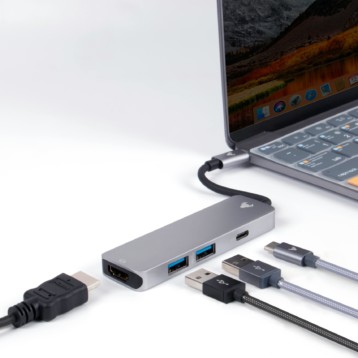
In today’s bustling urban landscapes, cycling has emerged as a popular mode of transportation, offering both environmental benefits and personal convenience. However, the safety of cyclists remains a pressing concern, with inadequate infrastructure posing significant risks on our roads.
Consider this: despite the increasing number of cyclists on our streets, many cities and regions still lack the necessary infrastructure to ensure their safety. From poorly maintained bike lanes to unclear signage, cyclists often face many obstacles that compromise their safety and well-being.
But there’s hope on the horizon. The concept of “complete streets” offers a promising solution to this issue. By designing roads that accommodate the needs of all users, including cyclists, pedestrians, and motorists, we can create safer and more inclusive environments for everyone.
In this article, we’ll explore the benefits of improved cycling infrastructure, the dangers of inadequate infrastructure, and actionable steps we can take to advocate for change.
The Benefits of Improved Cycling Infrastructure
Investing in better cycling infrastructure offers a lot of advantages, extending beyond the safety of cyclists themselves. Let’s explore some of the main benefits:
- Enhanced Safety: Separated bike lanes provide a safe haven for cyclists of all ages and abilities, reducing the risk of cyclist accidents and injuries with motor vehicles.
- Reduced Traffic Congestion: More people cycling means fewer cars on the road, alleviating traffic jams and shortening commute times.
- Improved Public Health: Cycling is an excellent form of exercise that boosts cardiovascular health, aids weight management, and enhances mental well-being.
- Economic Boost: Bike-friendly cities attract tourists and support local businesses, stimulating economic growth in urban areas.
- Community Vibrancy: Cycling fosters social interaction and a sense of belonging, creating vibrant and connected neighborhoods.
As we can see, investing in improved cycling infrastructure yields a range of benefits that extend far beyond the cycling community. By prioritizing the needs of cyclists, we can create more vibrant, sustainable, and inclusive cities for everyone.
The Dangers of Inadequate Cycling Infrastructure
Despite the numerous benefits of cycling, inadequate infrastructure poses significant dangers to cyclists and other road users. Here are some specific risks associated with poorly designed cycling infrastructure:
- Lack of Dedicated Lanes: In areas without dedicated bike lanes, cyclists are forced to share the road with motor vehicles, increasing the risk of accidents and collisions. Without designated space for cyclists, drivers may not give them the necessary space or respect, leading to dangerous situations.
- Poor Road Conditions: Uneven road surfaces, potholes, and debris can pose serious hazards to cyclists, causing accidents and injuries. Without proper maintenance, cycling infrastructure deteriorates over time, further increasing the risk for cyclists.
- Unclear Signage and Traffic Signals: Inconsistent or inadequate signage and traffic signals can confuse cyclists and drivers alike, leading to misunderstandings and potentially dangerous interactions on the road. Clear, well-designed signage is essential for ensuring the safety of all road users.
- Lack of Driver Education: Many drivers lack awareness of cyclists’ rights and the rules of the road regarding cycling. Without proper education and training, drivers may engage in risky behaviors around cyclists, such as passing too closely or failing to yield the right of way.
By addressing these dangers and investing in improved cycling infrastructure, cities can create safer and more accessible environments for cyclists and other road users. It is essential to prioritize the needs of cyclists when planning and designing transportation infrastructure to ensure the safety and well-being of all members of the community.
What We Can Do to Advocate for Change
Now that we understand the importance of improved cycling infrastructure and have seen successful examples, let’s explore actionable steps we can take to advocate for change in our own communities.
Contact Local Officials
Reach out to your city council members, mayors, and transportation authorities to express your support for better cycling infrastructure. Write letters, make phone calls, or attend public meetings to voice your concerns and push for action.
Join Advocacy Groups
Get involved with local cycling advocacy groups or organizations dedicated to promoting safer streets for cyclists. By joining forces with like-minded individuals, you can amplify your voice and advocate for policy changes and infrastructure improvements.
Participate in Public Hearings
Attend public hearings and planning meetings related to transportation and infrastructure projects in your community. Use these opportunities to advocate for the inclusion of cycling-friendly infrastructure in new developments and road improvement projects.
Support Bike-Friendly Businesses
Show your support for businesses that prioritize cycling by frequenting bike-friendly establishments, purchasing cycling-related products and services, and spreading the word about businesses that support cycling initiatives.
Choose Cycling
Whenever possible, choose cycling as your mode of transportation for short trips or daily commutes. By demonstrating the demand for cycling infrastructure through your actions, you can help drive change and encourage others to embrace cycling as well.
Educate Others
Raise awareness about the benefits of cycling and the need for improved infrastructure by sharing information with friends, family, and colleagues. Use social media, community events, and local publications to educate others and build momentum for change.
By taking these proactive steps and advocating for improved cycling infrastructure in your community, you can play a vital role in building safer roads for all road users, promoting sustainable transportation options, and creating healthier, more vibrant communities.
A Future of Safer Streets Ahead
Investing in improved cycling infrastructure isn’t just about creating safer roads for cyclists – it’s about building better communities for everyone. By prioritizing cycling, we can promote public health, reduce traffic congestion, and create more vibrant and sustainable cities.
Together, we have the power to drive change and shape the future of our urban landscapes. Whether it’s contacting local officials, joining advocacy efforts, or simply choosing to ride our bikes more often, every action counts. By raising our voices and pushing for progress, we can create streets that prioritize people over cars and build communities where everyone can thrive.
So let’s pedal towards a safer, more accessible future for all. With determination and collective action, we can make our cities more cyclist-friendly, one revolution at a time.










